I asked experts how long it really takes for a dehumidifier to dry laundry – plus how to use it the right way for faster drying
Fast, fresher laundry starts with the right dehumidifier setup
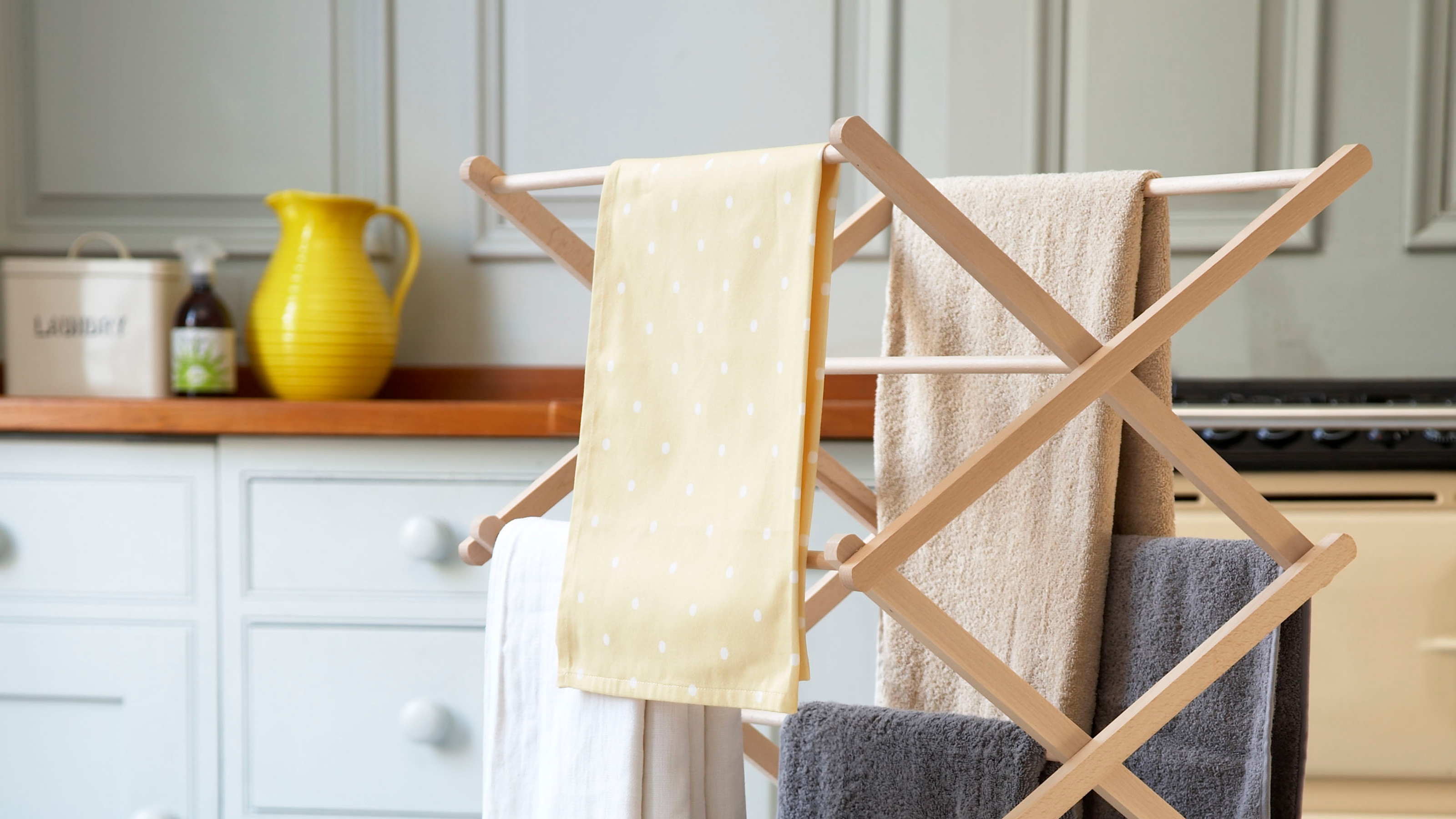

Drying laundry indoors becomes a whole different ball game as soon as winter hits, and that's exactly why so many of us (including me) rely on one of the best dehumidifiers to cut down the drying times and stop things from getting musty.
Dehumidifiers aren't just for preventing condensation. Quite a number of models now have a dedicated laundry mode, and they can make your clothes dry noticeably faster, even in cold and poorly ventilated rooms.
'Using a dehumidifier - particularly in winter - works out to be a simple and easy way to dry your clothes in the winter months. There are many benefits to drying your clothes next to or near a dehumidifier; it’s cost-effective, uses significantly less energy than a tumble dryer, and it's also a more gentle option on your clothes with no risk of excessive shrinkage during drying,' explains Olivia Xu, Chief Marketing Officer at DREO.
But how long does a dehumidifier actually take to dry a load? Well, it can range anywhere from four to six hours. I asked the experts for the key factors that influence drying time and also their top tips for faster drying with a dehumidifier.
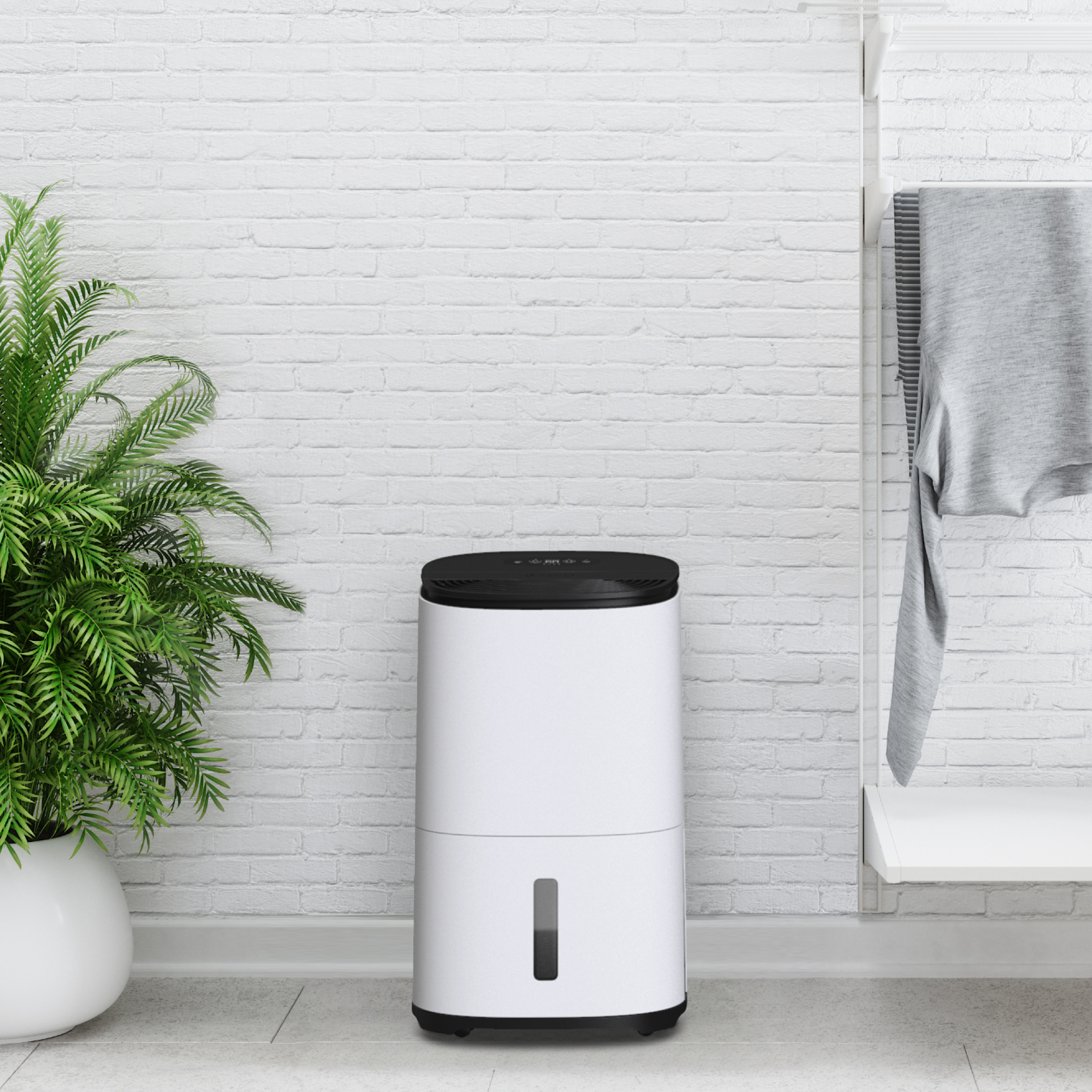
Key factors that influence drying time
'Various factors can affect the time it takes to dry laundry indoors, including washing machine spin speed, volume and type of laundry, and how items are arranged over the clothes horse,' explains Pamela Petty, Director at Ebac.
So let's dive into these factors that affect drying time.
1. The type and capacity of your dehumidifier
The capacity of your dehumidifier is another consideration, as higher capacity models will handle moisture much quicker than smaller models, explains Katie Lilywhite, dehumidifier expert at AO.com.
Sign up to our newsletter for style inspiration, real homes, project and garden advice and shopping know-how
A more powerful compressor or hybrid unit (around 10-20L extraction per day) (like the Pro-Breeze 30L smart dehumidifier, RRP £229.99, Amazon) will dry laundry much faster than a smaller 5-8L model.
'A desiccant model works well in cooler rooms and will dry clothes faster than a compressor, but at a higher running cost because it produces warmth,' adds Chris Michael, CEO at Meaco.
Those with a laundry mode push the fan harder for quicker results as it runs the machine continuously to pull moisture from the air faster. Models without it can still dry clothes, but usually take longer.
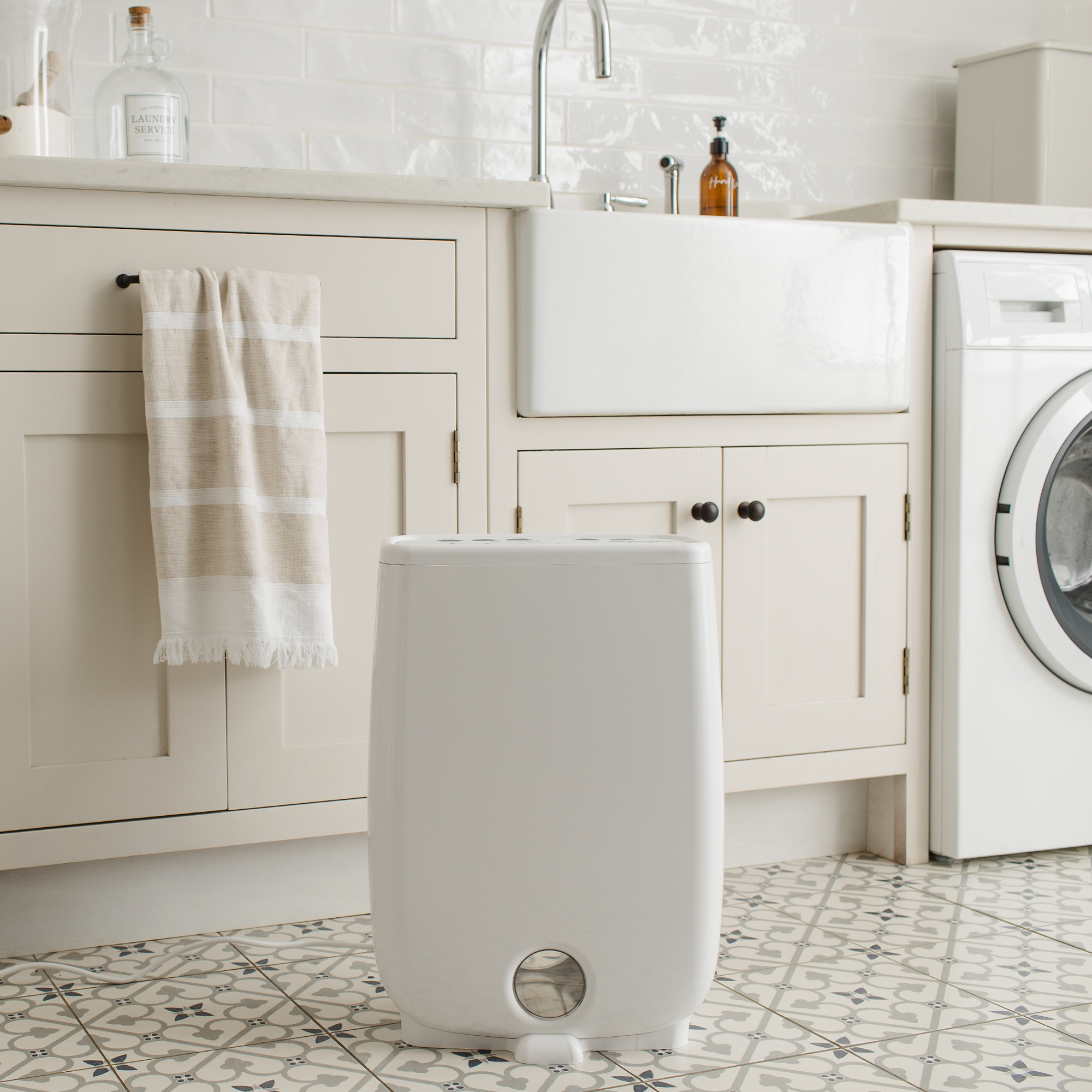
2. Room temperature matters more than you think
'It’s worth bearing in mind that dehumidifiers work far better in rooms within the 15–20°C mark,' explains Katie. 'Cold rooms make moisture removal slower, so you may notice this impacts your drying time as we head into winter.'
So if you're drying laundry in a cold utility or spare room, extraction slows and drying can stretch to eight hours or more. It's worth choosing a dessicant model like the eBac 4650, £329, if your drying space is on the colder side. These work better in lower temperatures than compressor types.
'The room should also be enclosed, with windows and doors shut to ensure the dehumidifier is working as effectively as possible to dry the clothes,' adds Olivia. 'Secondly, if it’s possible for you to add a small amount of heat, for example, heating on very low, then that will quicken the drying time.'

Ebac Director Pamela Petty joined the family firm aged 17, going on to work across all areas of the company. She has also held various non-executive and mentoring roles, and runs the Olivia Mae Foundation in memory of her daughter to raise funds for families whose children are receiving hospital care.
3. Airflow and placement
Good placement can shave a good few hours off drying time. It's best to position your dehumidifier around 30cm from the airer, in a closed room and with clothes spaced out to stop moisture trapping.
Pamela suggests 'when arranging freshly washed laundry over a clothes horse, work from the bottom up, placing smaller items on lower rungs and larger items on higher rungs, and space out items evenly.'
Another top tip is to 'place the unit in the same room as the laundry with the air outlet facing the clothes,' adds Chris.
'This keeps vents clear and ensures good airflow in and out, enabling your dehumidifier to draw in excess moisture and release warmer, drier air into the room,' agrees Pamela. All of which contributes to quicker drying time and helps maintain that ‘freshly washed’ smell.
Olivia adds that it’s also best to rotate your clothes after a few hours to get an even dry and speed up the process.
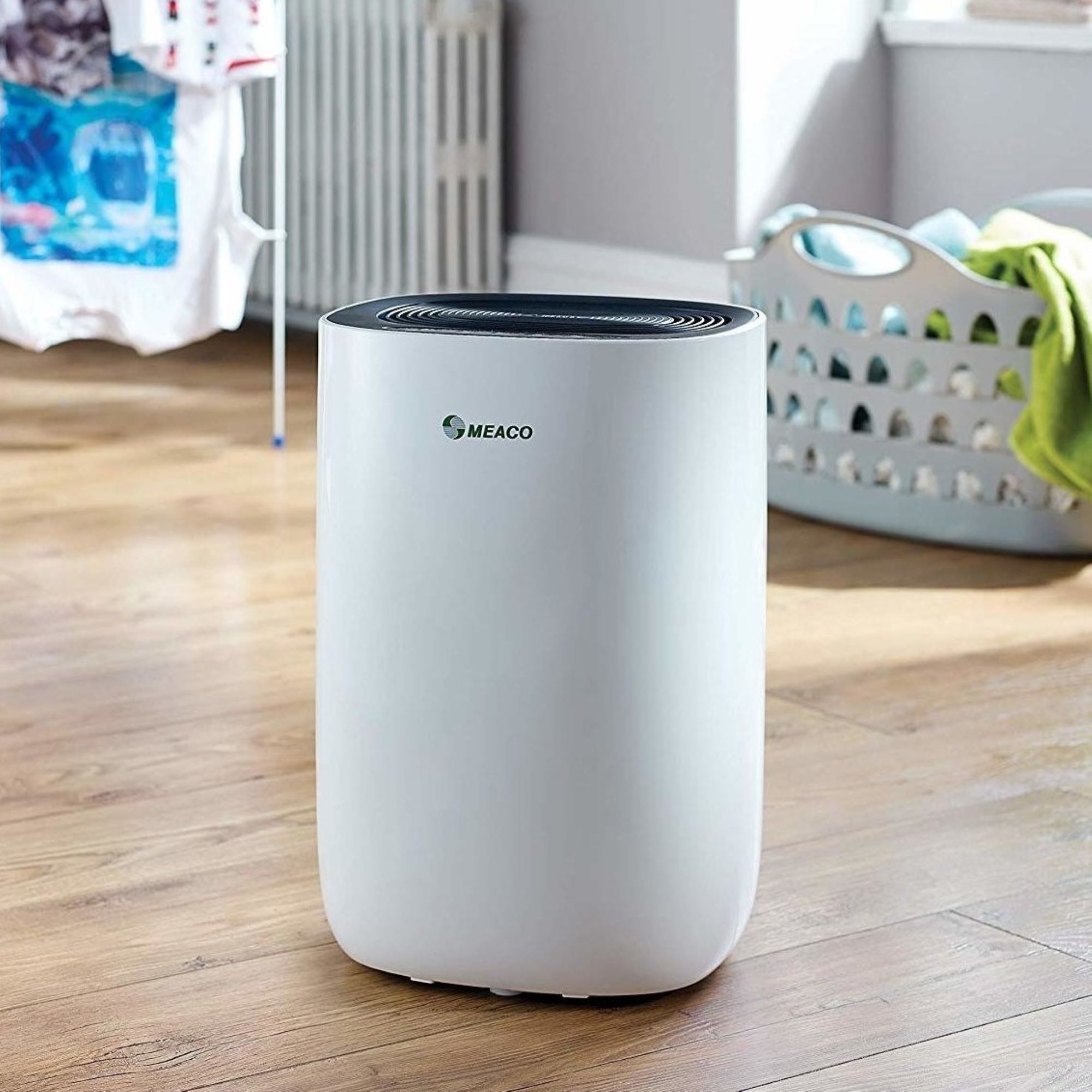
4. How wet the washing is
The amount of moisture in your clothes is also a huge factor. Chris recommends giving them an extra spin to release as much water as possible. It's an age-old trick that my mother-in-law has always used to dry clothes indoors fast.
The thicker the clothes, the greater their mass and the longer the drying time, explains Chris. Heavy items like towels, jeans and jumpers will still take the longest to dry even with a dehumidifier running.

Chris founded leading dehumidifier manufacturer Meaco and has been advising on humidity solutions and dehumidifiers since 1991 and is well-known within the dehumidifier industry across the world as a leader in innovation and sustainability. With a wealth of experience in the industry, Chris is committed to helping provide low-energy and low-noise solutions appliances that improve the lives of customers.
5. The room's humidity
'Another often overlooked factor, however, is humidity levels in the home – and, related to this, whether you are using a dehumidifier to remove excess moisture from the air,' says Pamela.
'The higher the room's relative humidity at the start of the drying time, the longer it will take the clothes to dry. Try to keep this at 55%rh or below to start with,' adds Chris.
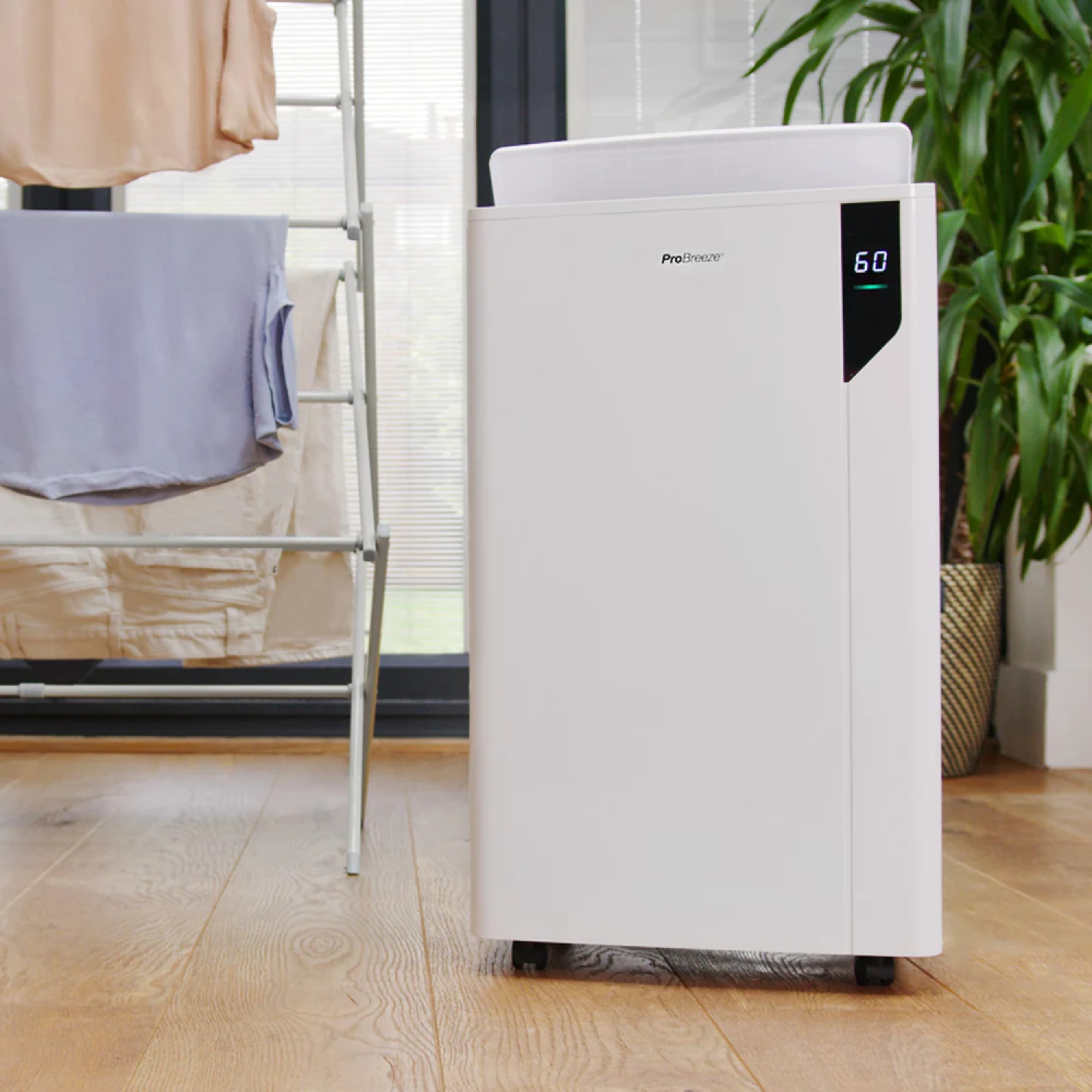
6. The size of the room
Katie also explains that the size of the room is vital and can dictate the difference in hours.
'The smaller the room, the quicker your clothes will dry, so it’s worth placing your clothes horse or drying rack in a smaller room,' adds Olivia.

AO's latest addition is Katie, a key expert at a multitude of appliances, including dehumidifiers, portable air conditioners, fans and air purifiers.
The best dehumidifiers we've tested
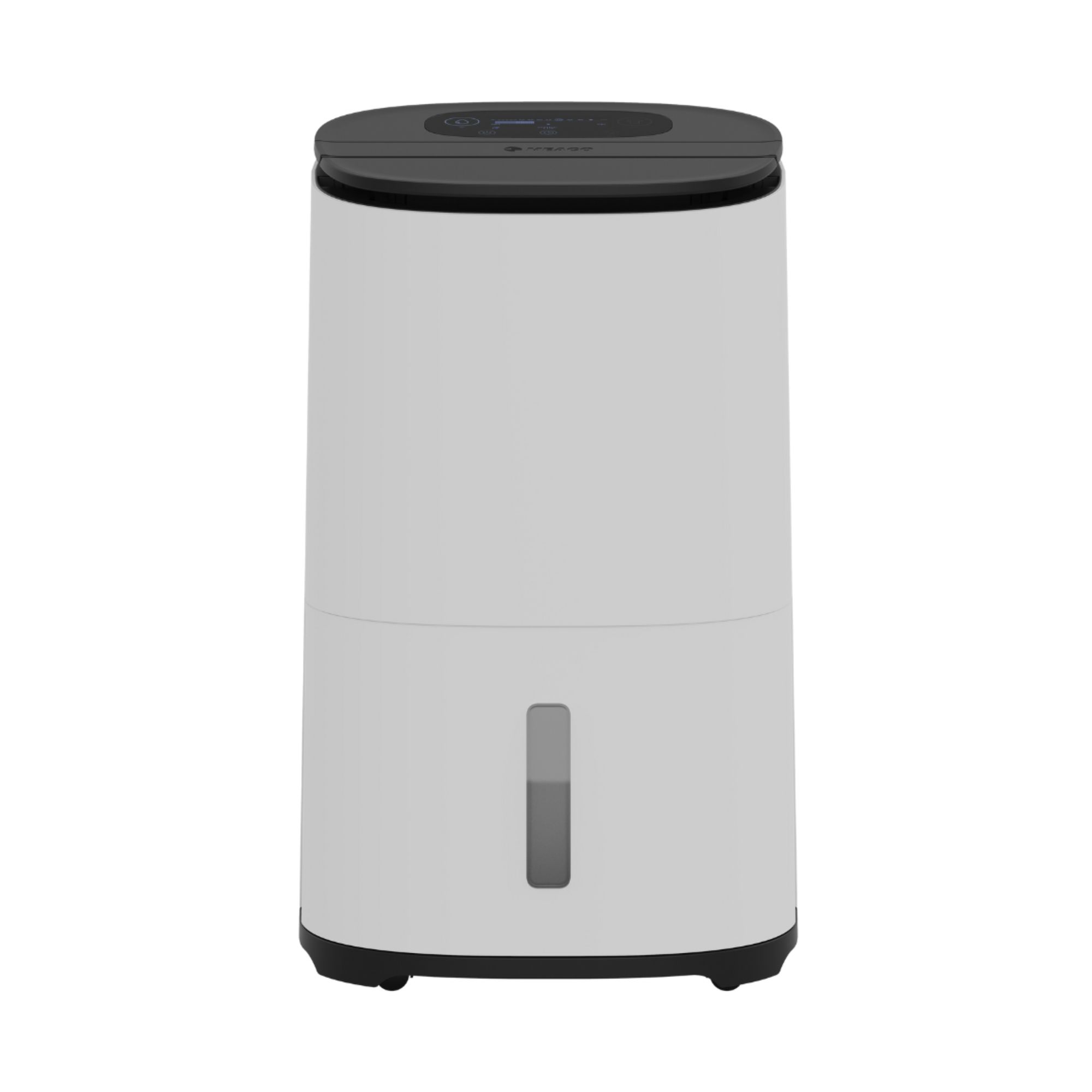
Meaco's Arete Two is notable for its range of sizes, which includes a 25L model, allowing for faster drying of large washing loads.
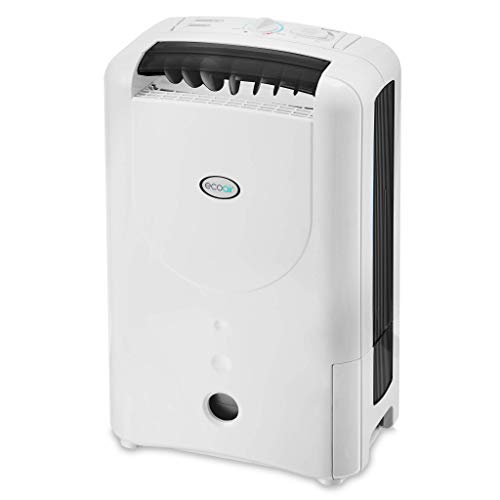
The EcoAir DD1 Simple MK3 is a great option for a garage, basement, or unheated rooms during the winter months. In our tests, it also performed brilliantly in normal conditions, making quick work of drying wet washing.

The ProBreeze is the best high-capacity dehumidifier in our guide, as it can extract up to 30L of moisture, making it a powerful addition to your laundry drying arsenal.
FAQs
How long should you leave the dehumidifier on when drying clothes?
Ideally, keep it running until your clothes feel cool and dry to the touch and 'then until the room's relative humidity is back down to the 50s, so that your room is ready for the next load,' explains Chris Michael, CEO of Meaco.
However, it really depends on how much washing you want dry - a full load of washing could take up to 12 hours to dry, according to Olivia Xu, from DREO. In which case, it’s important to know what sort of dehumidifier you need to buy/have.
'In order to dry your clothes for extended periods of time, it’s best to have a dehumidifier that has an automatic shut-off when the tank is full. You can also buy dehumidifiers that have a hose that then drains the water for you,' explains Olivia.
If your model has a laundry mode, leave it on for the entire cycle as it's designed to run continuously without stopping.
Ebac has dessicant models that automatically switch on until the right humidity level is restored, then switch back to standby mode. 'This provides round-the-clock protection for the whole of the home without wasting any energy, all from the one dehumidifier,' explains Pamela Petty, Director at Ebac.
Where should a dehumidifier be placed when drying clothes?
Position your dehumidifier around 30cm from the airer, with nothing blocking the airflow. Close the door to keep moisture contained and avoid placing the unit directly underneath hanging clothes. It needs clear space for air to circulate. A small bedroom, utility or landing works well, as long as it's a sealed, moderately warm space.
'If you can get the airflow from the dehumidifier to hit the clothes, then the drying time is reduced,' adds Chris Michael from Meaco. 'Keep clothes near the unit but not touching it. If damp fabric rests on the appliance or drips onto it, moisture can reach electrical parts, which is unsafe.'
Used correctly, a dehumidifier can dry a full load of laundry within three to six hours, making it one of the most efficient ways to dry clothes fast in winter. A decent capacity, a warm room and a dedicated laundry mode all help speed things up even more.

Jenny is Senior Digital Editor and joined the team in 2021, working across Ideal Home, Real Homes, Homes & Gardens, Livingetc and Gardeningetc. Since getting on the property ladder, her passion for interior design and gardening has taken on a new lease of life. She loves collecting and salvaging unique items (much to her other half's despair) but sniffing out stylish home bargains is her one true love.
You must confirm your public display name before commenting
Please logout and then login again, you will then be prompted to enter your display name.